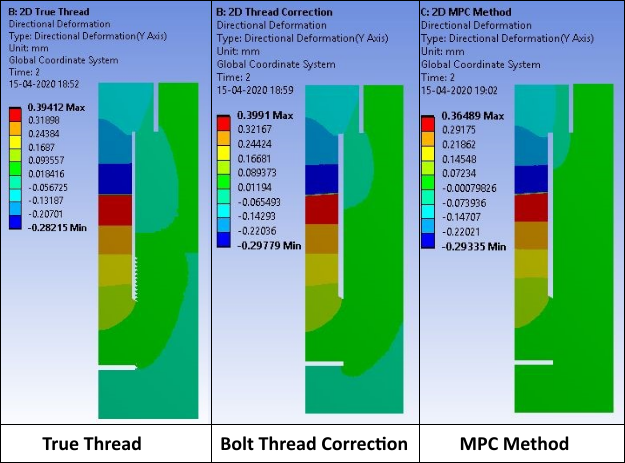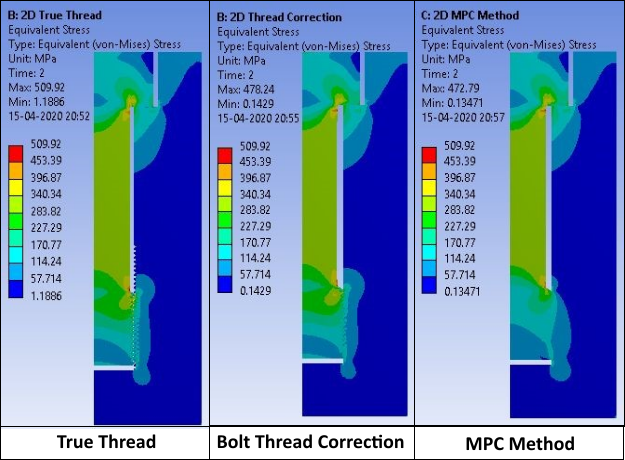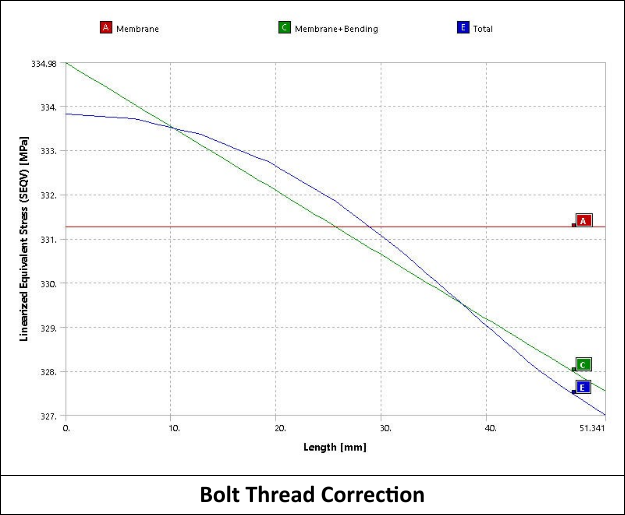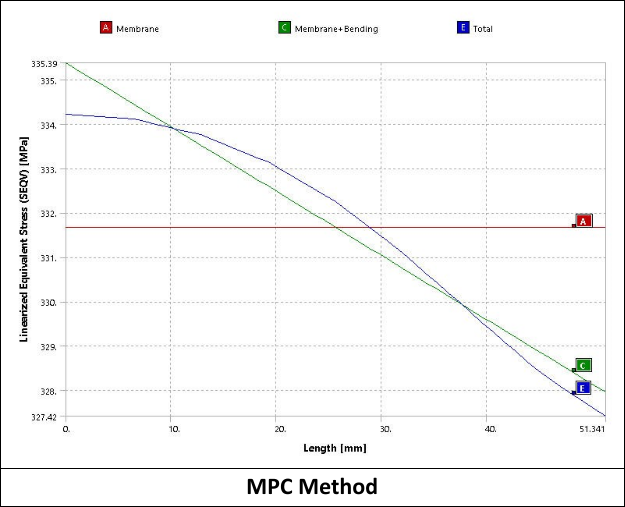Directional Deformation (UY)
The pretension effects can be observed in the following figure in which two segments of the bolt are pulling against each other.
Equivalent Stress
The von Mises stress plots below show that shank stress is similar in all three methods. User-specified contour values (except the minimum value) are used for the purpose of comparison. Variations are observed only in local areas near the thread region.
The stress plot of the thread region for the bolt thread correction method closely matches the stress plot for the true thread simulation, and the MPC method plot varies. The comparison between stress plots demonstrates that accurate simulation of thread behavior and shank stress in the bolt can be achieved by using the bolt thread correction method.
Linearized Equivalent Stress along a Path (at Y = 280 mm)
Linearized stress in the bolt shank along the path at y = 280 is similar for all three methods. The values are 329.39 MPa for the true thread simulation, 331.26 MPa for the Bolt Thread Correction method, and 331.67 MPa for the MPC method.
From the tables below it is clear that the bolt thread correction method is computationally less expensive than the true thread simulation. The MPC method is also computationally less expensive, but the thread effect gets lost.
| True Thread Simulation Method | Computation Time | Elapsed Timeal | Cumulative Iterations | Number of Elements |
| True Thread Simulation | 116.3 | 121 | 34 | 13577 |
| Bolt Thread Correction method | 19.1 | 22 | 29 | 2629 |
| MPC method | 20.6 | 23 | 30 | 2629 |
Comparisons of results (Directional Deformation and Equivalent Stress) and computation time demonstrate that accurate simulation of thread behavior and shank stress results in the bolt can be achieved by the bolt thread correction method, with the added benefit of significant savings of simulation time.







